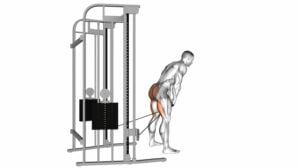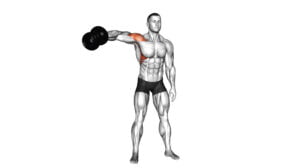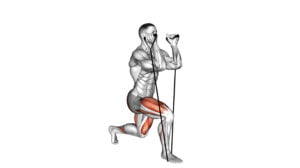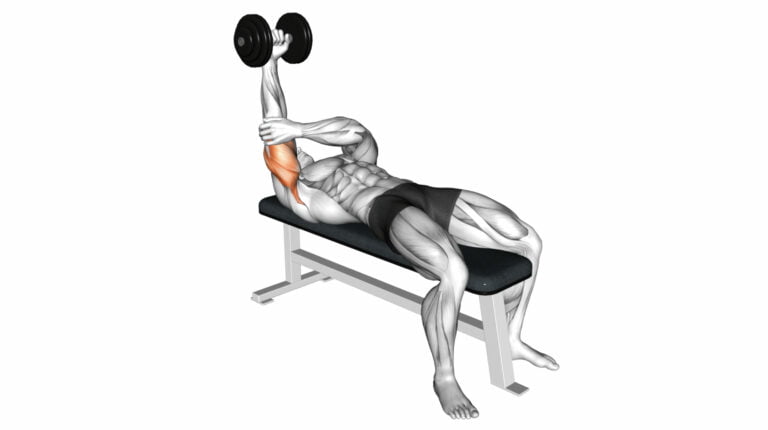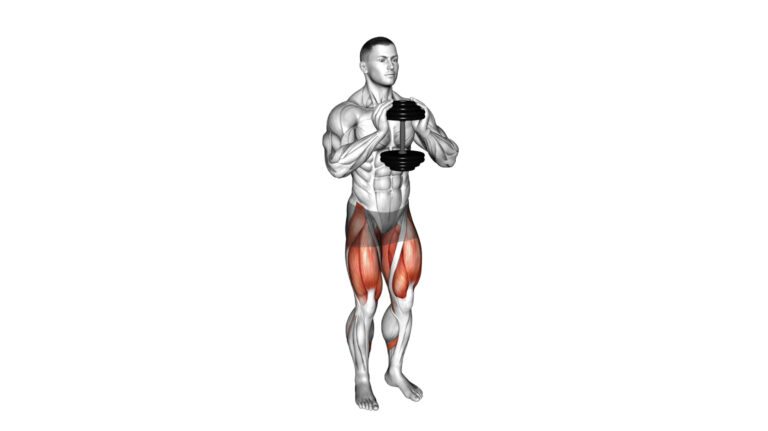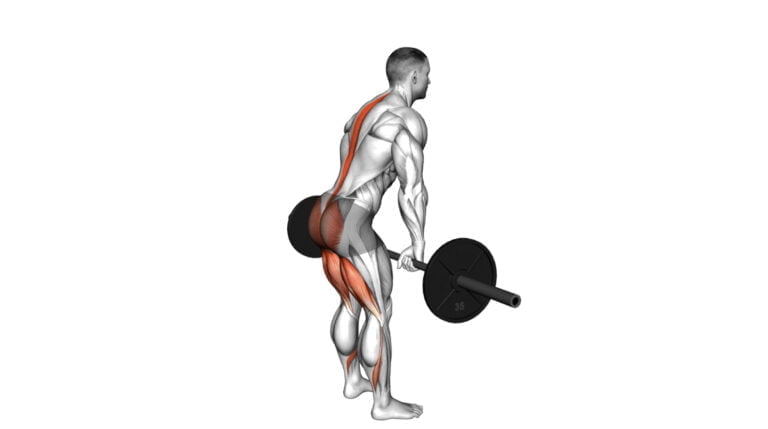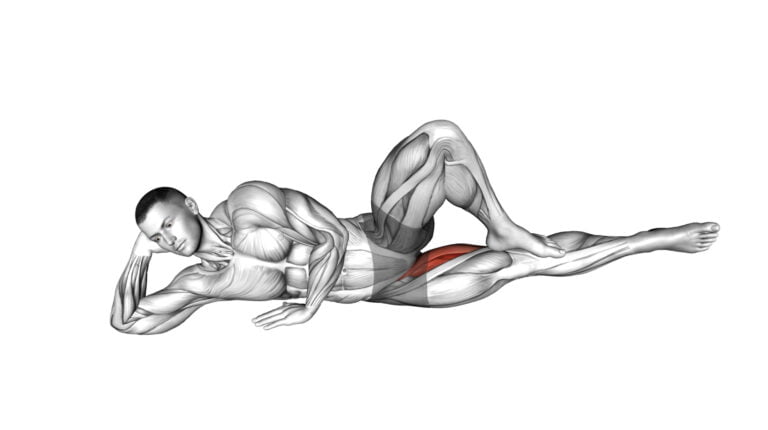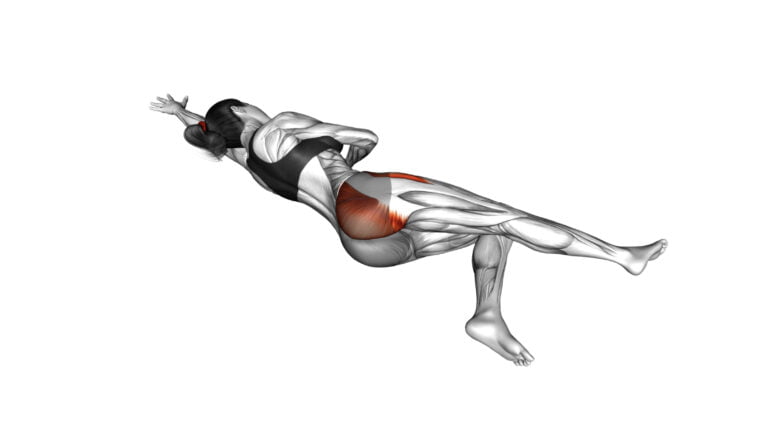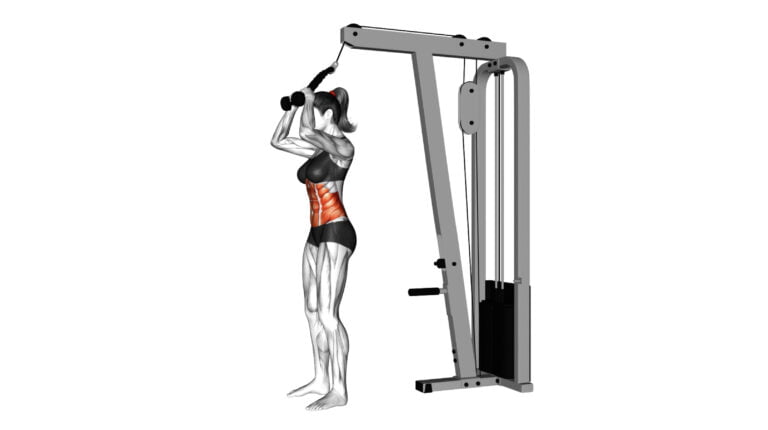10 Dumbbell Exercises For Forearms You Need to Try Today!
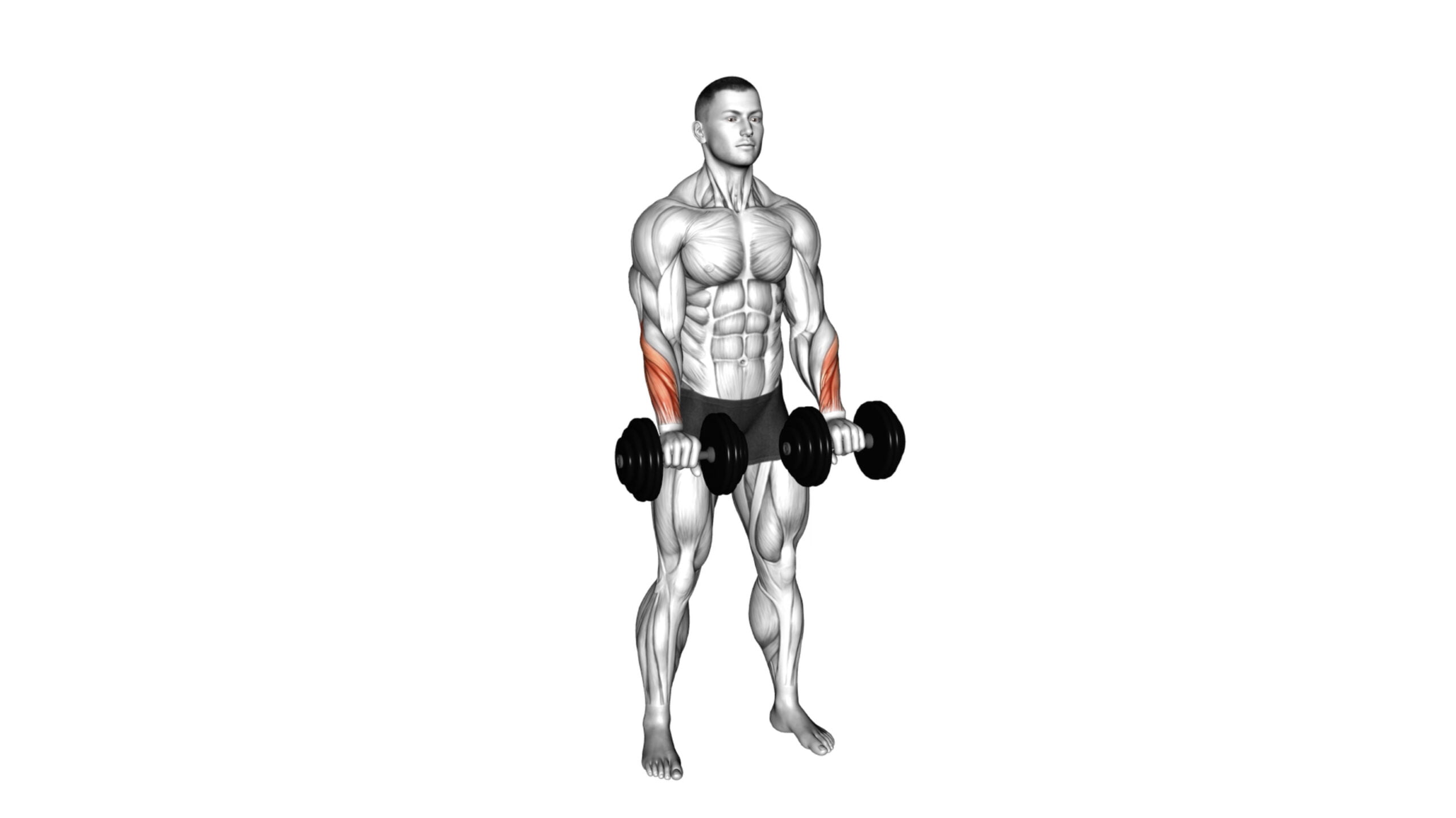
Dumbbell exercises for forearms might seem like a small part of your workout regimen, but they pack a powerful punch when sculpting the arms and enhancing overall strength. With over a decade coaching athletes and fitness enthusiasts, I’ve seen firsthand how targeted forearm training can significantly impact performance across various sports and daily tasks.
It’s not just about curling heavy weights; it’s about creating the right foundations for grip power and muscular stability.
While many focus on larger muscle groups for aesthetic gains, strong forearms are crucial to maximizing lifts and improving functional fitness. This blog will dive into ten smart dumbbell exercises that hone in on this often-neglected area, ensuring your forearms get the attention they deserve.
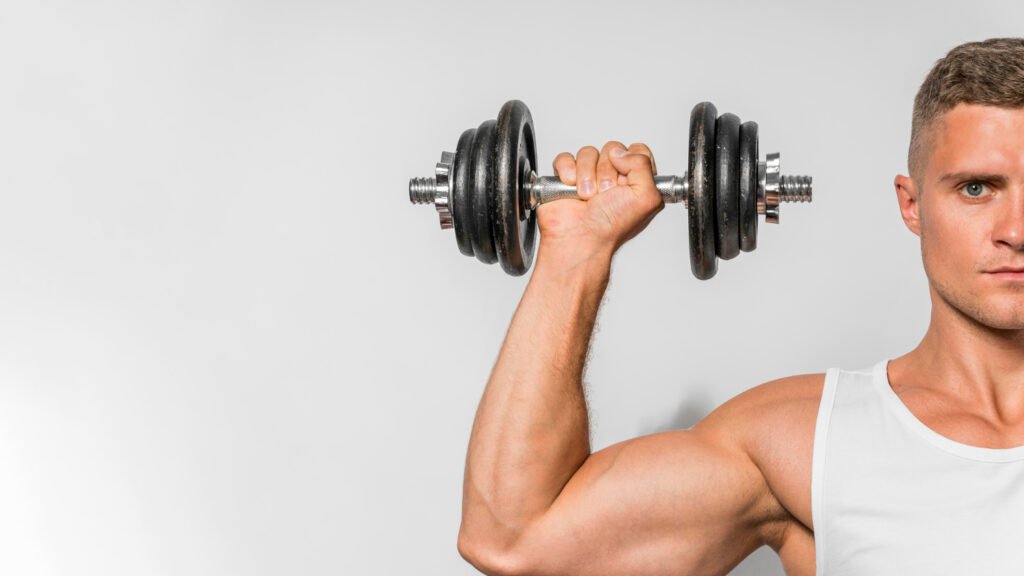
Ready to grip onto new challenges? Let’s strengthen together!
Key Takeaways
- Incorporating dumbbell exercises specifically designed for forearms can significantly improve grip strength, wrist stability, and overall arm development.
- Effective workouts for enhancing forearm muscles include a variety of movements such as wrist curls, reverse curls, and rotations targeting both the flexor and extensor muscle groups.
- To maximize gains in forearm strength from these exercises, maintain proper form with controlled movements while progressively increasing weight as your fitness level improves.
- Scheduling forearm workouts at least 2 – 3 times a week with appropriate rest and recovery periods is crucial to prevent overuse injuries and promote muscle growth.
- Strong forearms contribute not only to better performance in sports and daily tasks but also help prevent injuries by supporting joint health.
Understanding Forearms and Their Importance
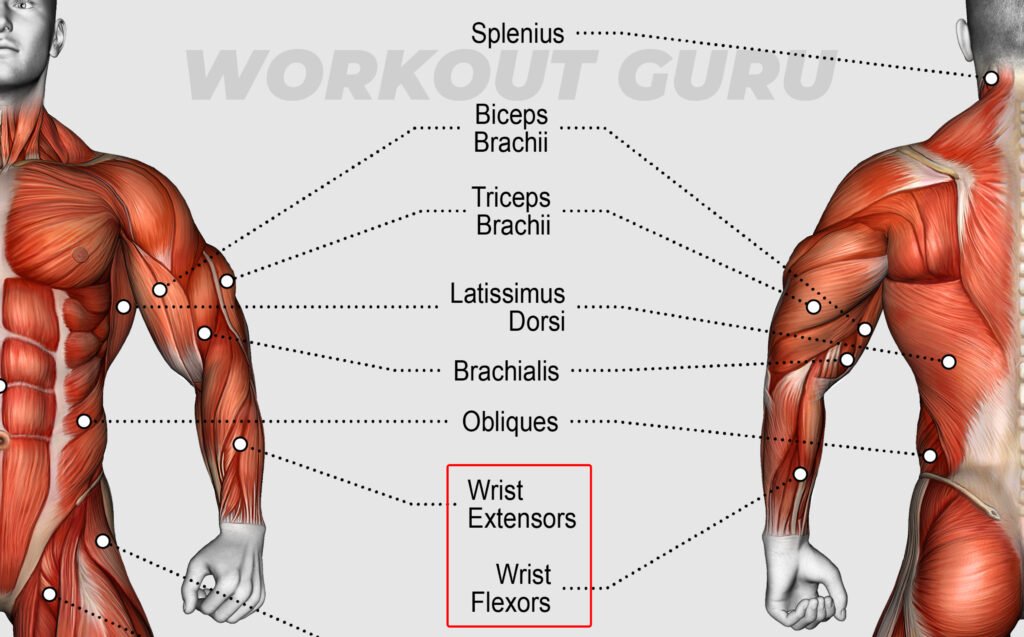
The forearms play a crucial role in various daily tasks and sports activities, including gripping, lifting, and throwing. Strong forearms are essential for overall upper body strength and can contribute to improved performance in weightlifting, rock climbing, and other physical activities.
Additionally, strengthening the forearm muscles can help prevent injuries and improve wrist stability. Dumbbell Exercises For Forearms provide an effective way to specifically target these muscles for optimal function and strength.
Forearm Anatomy and Function
Your forearms are powerhouses, full of muscles, nerves, and bones working together for gripping strength. Two main bones, the radius and ulna, form your forearm’s sturdy structure.
They connect your elbow to your wrist, allowing you to rotate your hands with ease. This rotational ability is thanks to two key movements: pronation and supination. Pronation turns your palms down while supination flips them up as if you’re holding a bowl of soup.
Muscle groups in the forearms like flexors help close your hand into a fist; extensors open it back up. These muscles control fingers and thumbs too – from typing messages to lifting weights.
Vital for tasks requiring fine motor skills or brute force grip strength, they also support the elbows and upper arms during compound exercises such as pull-ups or deadlifts. Stronger forearms mean better performance across various activities – whether you’re carrying groceries or crushing a bicep curl at the weight room.
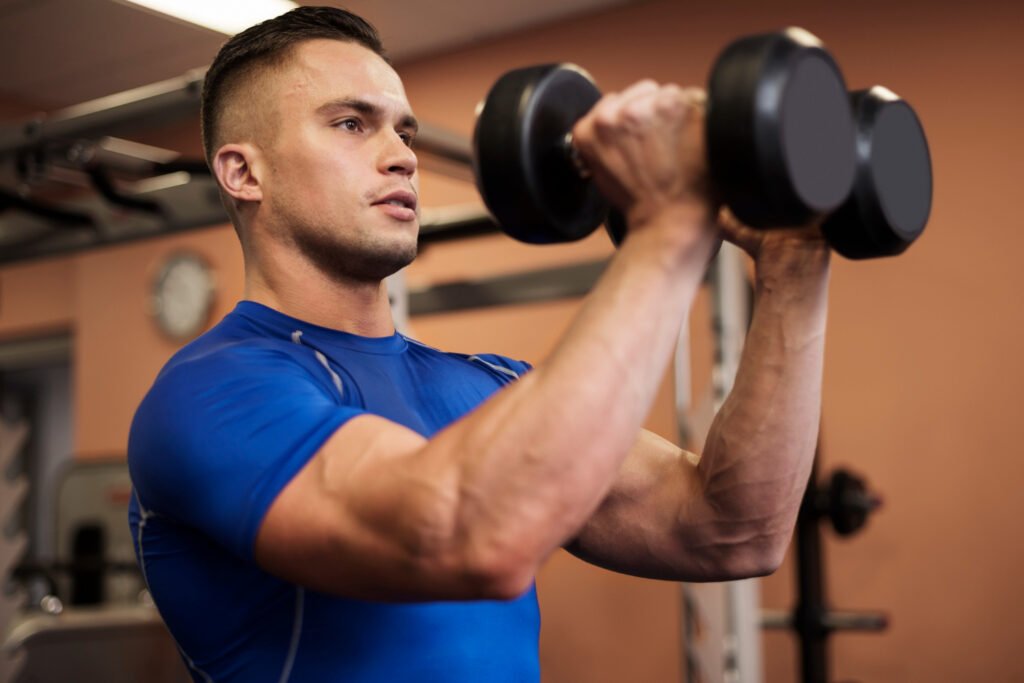
Benefits of Strong Forearms
Building strong forearms isn’t just for show; it actually boosts your overall strength and enhances performance in a variety of sports and daily activities. With increased forearm strength, gripping weights during workouts becomes more comfortable, allowing you to tackle exercises like deadlifts, pullups, and farmer’s walks with confidence.
This grip strength also translates to better dexterity when performing tasks that require fine motor skills such as typing or playing musical instruments.
Having powerful forearms can elevate your fitness game significantly. It’s not just about the ability to crush a handshake; these muscles support wrist stability and are essential for pushing motions in exercises like chest presses and shoulder movements.
Stronger forearms mean you’ll be less prone to injuries from repetitive strain because they help absorb some of the stress that would otherwise impact tendons in the wrists and elbows.
Revamp your weight training routine with dedicated forearm work for durable arms ready to conquer both heavy lifting sessions and everyday challenges.
How Strong Forearms Can Improve Your Overall Fitness
Having strong forearms isn’t just about grip strength; it’s a game-changer for your entire fitness regimen. Think about it: every time you pick up dumbbells for bicep curls or stabilize the barbell during bench presses, your forearms are hard at work.
They act as the crucial link between your arm muscles and the weights you’re lifting, allowing for better control and more effective workouts.
Boosting forearm strength can lead to impressive gains across all exercises that require upper body engagement. From deadlifts to shoulder presses, stronger forearms contribute to a firmer hold on free weights which translates into more powerful muscle contraction and increased muscle mass over time.
Whether you’re aiming to sculpt lean muscle or enhance muscular endurance, focusing on your forearm development is essential to achieving those goals.
Top 10 Dumbbell Exercises for Forearms
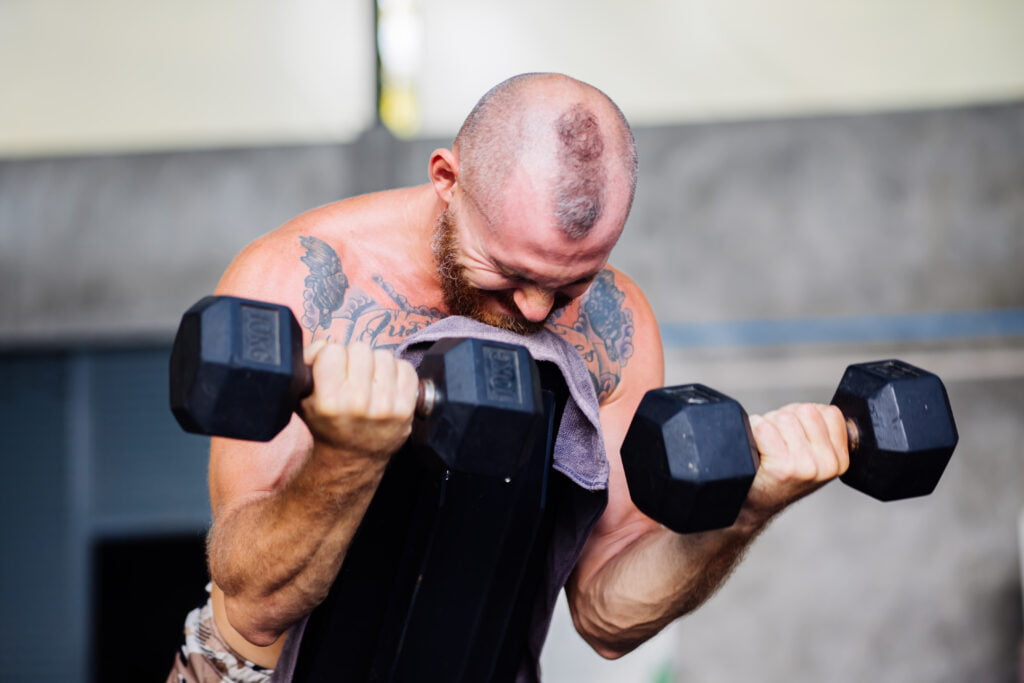
In this section, we will explore ten effective dumbbell exercises for strengthening your forearms. These exercises target key muscles in the forearm to help improve grip strength and overall arm stability.
Mastering these movements can lead to better performance in various activities such as weightlifting, rock climbing, and even everyday tasks like carrying groceries. So buckle up and get ready to take your forearm strength to the next level with these smart dumbbell exercises!
1. Dumbbell Standing Wrist Reverse Curl
Hold a dumbbell in each hand, standing with your feet shoulder-width apart and palms facing down. Keep your arms fully extended and curl the weights upward towards you by flexing your wrists.
Lower the dumbbells back to the starting position in a controlled manner, feeling the tension on your forearms throughout the movement.
Engage both arms independently to ensure balanced strength development while maintaining proper form. This exercise effectively targets the wrist extensor muscles, promoting better grip strength and overall forearm stability for various daily activities and sports.
2. Dumbbell Standing Wrist Curl
Hold a dumbbell in each hand, stand with your feet shoulder-width apart, and let the dumbbells hang by your sides with your palms facing forward. While keeping your forearms still, use your wrists to curl the weights upward as far as possible.
Slowly lower the dumbbells back down to the starting position and repeat for the desired number of reps. This exercise targets the wrist flexors and is beneficial for forearm strength and stability.
By incorporating dumbbell standing wrist curls into your workout routine, you can effectively strengthen the muscles in your forearms, which is crucial for improving grip strength and enhancing overall upper body performance.
3. Dumbbell Standing Reverse Curl Rotate
Hold a dumbbell in each hand, stand with your feet shoulder-width apart. Keep your arms straight down by your sides. Rotate the weights so that your palms are facing downwards. Slowly curl the weights upward by bending at the elbows while keeping your upper arms stationary.
Squeeze at the top and then rotate the weights back to starting position while lowering them down.
This exercise targets and strengthens both the brachioradialis, which is essential for forearm flexion, and the wrist extensors, allowing for improved grip strength and overall forearm development.
4. Dumbbell Standing Back Wrist Curl
Transitioning from the reverse curl rotate to the back wrist curl, this exercise focuses on engaging the muscles of the forearm to strengthen and stabilize. Holding a dumbbell in each hand with your palms facing down, stand with your feet shoulder-width apart.
Keeping your arms straight and close to your body, slowly flex your wrists upward as far as possible before lowering back down.
As you perform this movement, concentrate on keeping your upper arms stationary and isolating the motion to just your wrists. This exercise targets the extensor muscles of the forearm, helping to improve grip strength and overall forearm endurance.
5. Dumbbell Standing Hands Torsion
Engage your forearms with the dumbbell standing hands torsion exercise. Hold a dumbbell in each hand with an overhand grip, then slowly rotate your wrists outward as far as possible before bringing them back to the starting position.
This movement targets the forearm muscles and helps improve wrist strength and stability, crucial for various daily activities and sports.
Performing regular sets of this exercise can enhance your grip strength, aiding in activities like lifting heavy objects or performing exercises that involve pulling motions. Include the dumbbell standing hands torsion in your forearm workout routine to build a strong foundation for overall arm strength and functionality.
6. Dumbbell Standing Arms Rotate
Engage your core and stand with your feet shoulder-width apart. Hold a dumbbell in each hand, keeping your elbows close to your sides. Rotate your arms outward until they are parallel to the ground, then rotate them inward back to the starting position.
Ensure controlled movements and focus on engaging your forearm muscles throughout the exercise.
Incorporate the Dumbbell Standing Arms Rotate into your routine for enhanced forearm strength and improved overall upper body stability and coordination.
7. Dumbbell Seated Neutral Wrist Curl
In the dumbbell seated neutral wrist curl, sit on a bench with your feet flat on the floor and hold a dumbbell in each hand at arm’s length. Keep your forearms resting on your thighs with your palms facing up.
Lift the dumbbells as high as possible by flexing your wrists and then slowly lower them back down to the starting position. This exercise effectively targets the forearm muscles, particularly the brachioradialis, helping to enhance grip strength and overall forearm development.
As an isolation exercise, this movement engages and strengthens specific muscle groups without putting undue stress on other parts of the body. The seated position also helps stabilize your upper body during the exercise, allowing for better control and focus in targeting the forearms.
To maximize results, maintain proper form throughout each repetition by controlling both upward and downward movements of the weight.
8. Dumbbell Behind Back Finger Curl
The dumbbell behind back finger curl effectively targets the forearm flexors, building strength and muscular endurance. To perform this exercise, stand with your feet shoulder-width apart and hold a dumbbell in each hand behind your back.
With palms facing away from you, slowly curl your fingers to lift the weight as high as possible before lowering them down. This movement engages the muscles in the wrists and forearms, aiding in grip strength improvement and overall forearm development.
As you incorporate the dumbbell behind back finger curls into your routine, focus on maintaining proper form to maximize its benefits. Gradually increase the weight as your strength improves to continually challenge your forearms.
9. Dumbbell Over Bench Revers Wrist Curl
Keep your forearms parallel to the ground, with your wrists hanging over the edge of a bench and holding a dumbbell in each hand. Inhale as you flex your wrists upward, then exhale as you lower the dumbbells back down until your wrist reaches full extension.
Utilize controlled movements throughout, avoiding any jerking or sudden motions that could strain your muscles.
Engage up to three sets of 10-12 repetitions for this exercise for optimal forearm strength gains and improved grip stability. Remember to maintain proper wrist alignment during the entire range of motion.
10. Dumbbell One arm Wrist Curl
Strengthen your forearm muscles with the dumbbell one arm wrist curl. Sit on a bench, hold a dumbbell with an underhand grip, and rest your forearm against your thigh. Flex your wrist upward to lift the weight as high as possible, then slowly lower it back down.
This exercise targets the flexor muscles in the forearm, enhancing grip strength and overall forearm power. It’s effective for improving wrist stability and reducing the risk of injury during daily activities or sports.
Incorporate this move into your workout routine to build stronger forearms and enhance your performance in various physical activities.
Tips for Incorporating Dumbbell Exercises For Forearms into Your Workout Routine
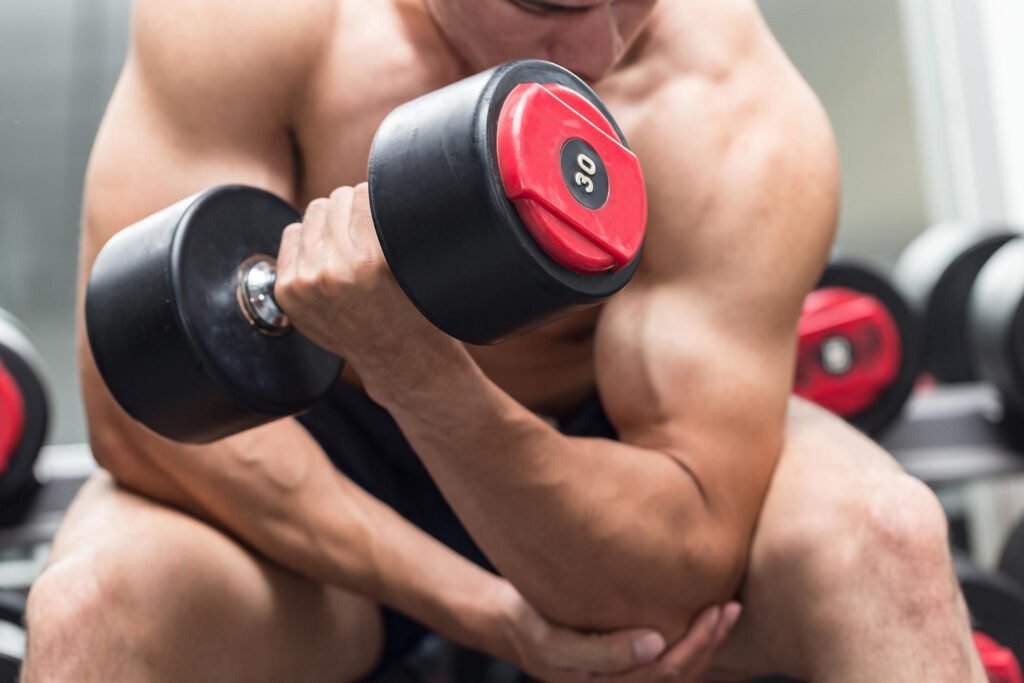
To get the most out of your dumbbell exercises for forearms, it’s important to focus on proper form and technique. Start with a weight that allows you to perform the exercises with good form, and gradually increase the weight as your strength improves.
Additionally, be sure to include a variety of forearm exercises in your workout routine to target different muscles in the forearms for balanced strength development.
Proper Form and Technique
Maintain a neutral standing position with your feet shoulder-width apart when performing dumbbell exercises for forearms. Keep your back straight, engage your core, and ensure that your wrists are in line with your forearms to prevent strain or injury.
Throughout each exercise, maintain slow and controlled movements to fully engage the forearm muscles and avoid using momentum.
When executing wrist curls or rotations, focus on isolating the movement to the forearm without involving unnecessary motion from other parts of the body. Additionally, it’s crucial to use a weight that allows you to perform each repetition with proper form while feeling resistance in the targeted muscle groups.
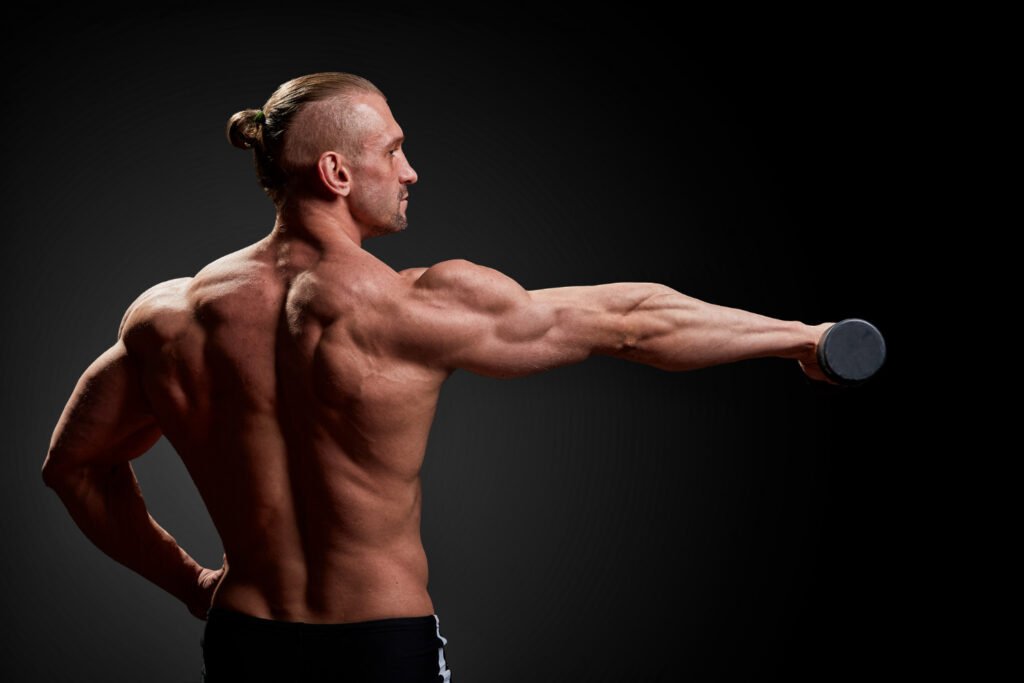
Reps, Sets, and Frequency Recommendations
Now that you have mastered the proper form and technique for dumbbell exercises targeting your forearms, it’s essential to understand the recommended reps, sets, and frequency for optimal results. Here are the detailed recommendations:
- Repetitions: Aim for 8-12 repetitions for each exercise to promote muscle strength and endurance.
- Sets: Perform 3-4 sets of each exercise to ensure comprehensive muscle engagement and effective progression.
- Frequency: Incorporate forearm exercises into your workout routine at least 2-3 times per week, allowing adequate rest between sessions for muscle recovery and growth.
Importance of Rest and Recovery
Rest and recovery are essential components of any workout routine, especially when focusing on strengthening the forearms. After intense dumbbell exercises for forearms, giving your muscles time to recuperate is crucial in preventing overuse injuries and ensuring optimal muscle growth.
Adequate rest allows the body to repair and rebuild the micro-tears that occur in the muscles during exercise, leading to greater strength gains over time. Moreover, prioritizing rest also plays a vital role in preventing fatigue and burnout, ultimately helping you maintain consistency in your training regimen.
Incorporating dedicated rest days into your workout schedule can significantly impact your overall performance by allowing your muscles to adapt and grow stronger. By listening to your body’s signals and providing it with adequate time to recover between forearm workouts, you’ll be better equipped to maximize the benefits of your training routine while minimizing the risk of injury or strain.
Conclusion
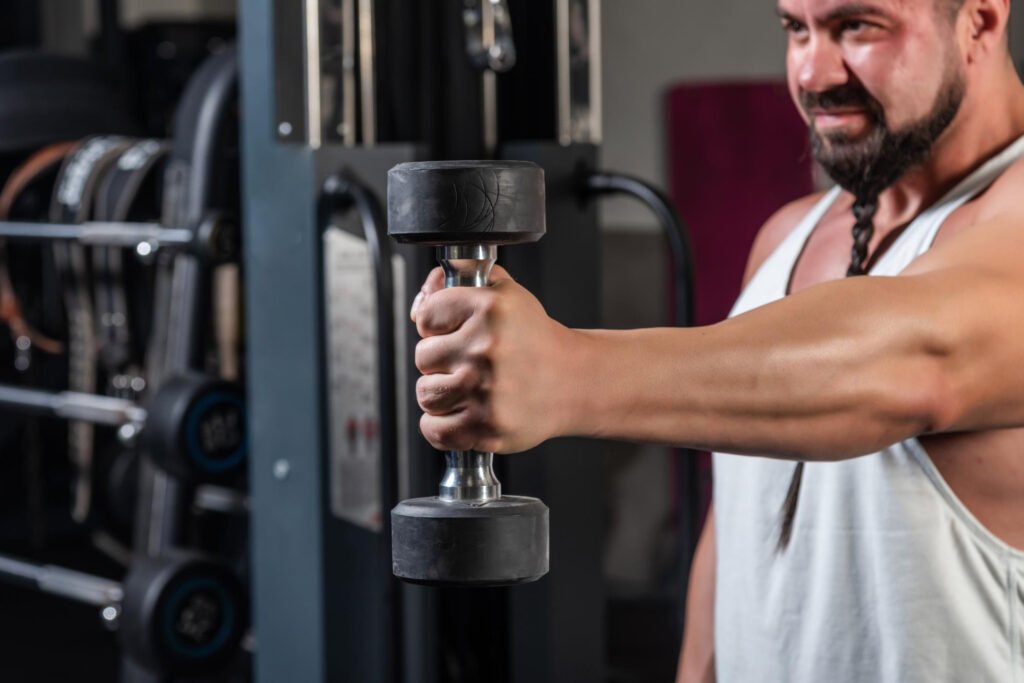
Incorporate these 10 smart dumbbell exercises for strengthening your forearms into your workout routine. Mastering these exercises is practical and efficient, offering a straightforward approach to improving forearm strength.
How will you apply these strategies to achieve significant improvements in your overall fitness? The impact of strong forearms extends beyond just physical strength; it can lead to greater success in various aspects of life.
Reflect on the potential benefits and take action toward building stronger forearms for a healthier, more capable you.
FAQs
1. What are some effective dumbbell exercises for forearm strength?
Effective dumbbell exercises that target your forearms include hammer curls, reverse curls, and wrist flexion and extension movements. These will engage the extrinsic muscles in your arms from your fingertips to your elbow joint.
2. Can I improve my grip with dumbbell workouts?
Absolutely! Strengthening your forearms through exercises like farmer’s walks with dumbbells or kettlebells can enhance the isometric strength in the palm of your hand, improving overall grip.
3. Do I need special equipment for these forearm exercises?
No special equipment is needed beyond a set of dumbbells. Some variations may suggest using a chair for seated exercises like concentration curls, but you can perform most activities standing up or on an exercise mat.
4. How often should I do these arm-strengthening routines?
For balanced muscle-building progress, incorporate these forearm strengthening routines into your regular strength-training schedule 2-3 times per week, ensuring you allow time for rest and recovery between sessions to prevent soreness and overuse injuries.
5. Are there any precautions I should take while exercising my forearms?
Always begin any new exercise routine with proper stretching to prepare muscles and joints; consider consulting a personal trainer if you’re unfamiliar with specific techniques or have concerns about form to ensure safety and effectiveness.
6. Will working out just my forearms help build bigger biceps as well?
While targeted forearm workouts primarily focus on those muscles alone, they also indirectly work other areas such as biceps, triceps, shoulders—and even pectorals—especially during compound movements where multiple muscle groups activate together.

Author
Years ago, the spark of my life’s passion ignited in my mind the moment I stepped into the local gym for the first time. The inaugural bead of perspiration, the initial endeavor, the very first surge of endorphins, and a sense of pride that washed over me post-workout marked the beginning of my deep-seated interest in strength sports, fitness, and sports nutrition. This very curiosity blossomed rapidly into a profound fascination, propelling me to earn a Master’s degree in Physical Education from the Academy of Physical Education in Krakow, followed by a Sports Manager diploma from the Jagiellonian University. My journey of growth led me to gain more specialized qualifications, such as being a certified personal trainer with a focus on sports dietetics, a lifeguard, and an instructor for wellness and corrective gymnastics. Theoretical knowledge paired seamlessly with practical experience, reinforcing my belief that the transformation of individuals under my guidance was also a reflection of my personal growth. This belief holds true even today. Each day, I strive to push the boundaries and explore new realms. These realms gently elevate me to greater heights. The unique combination of passion for my field and the continuous quest for growth fuels my drive to break new ground.

